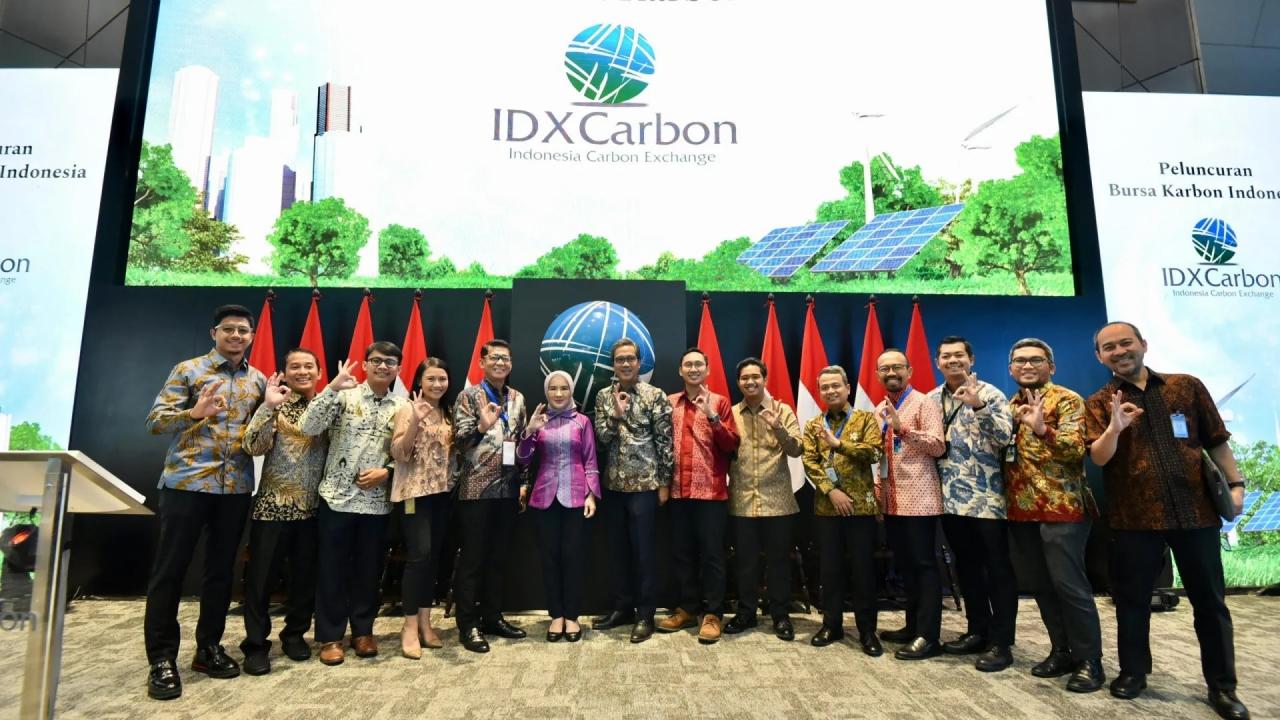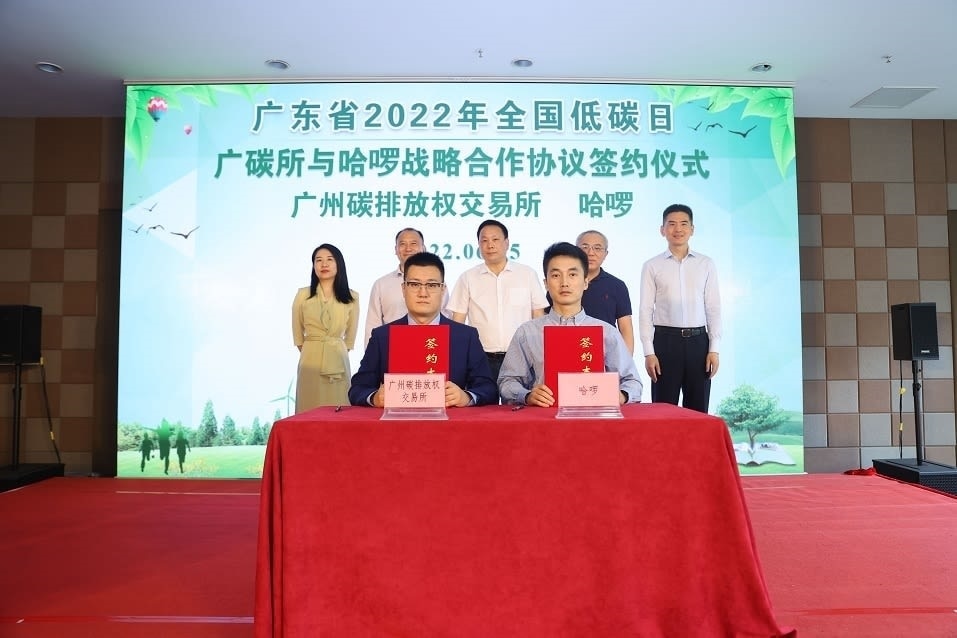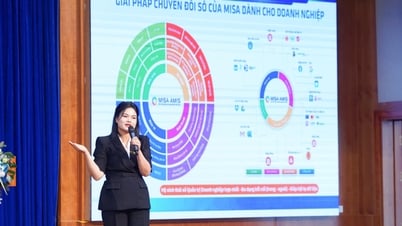The establishment of a carbon trading platform will help related transactions become more centralized, transparent and efficient, towards achieving the goal of zero emissions (Net Zero).
Indonesia launched its first carbon trading platform on September 26, 2023, in an effort to limit the climate impact of its largely coal-fired power sector as part of its goal of reducing carbon emissions to net zero by 2060.
Speaking at the ceremony, Indonesian President Joko Widodo emphasized that this is Indonesia's real contribution to the world in fighting the climate crisis, and said that the carbon trading platform will help the country achieve its climate commitments agreed upon under the 2015 Paris Agreement on climate change to prevent global temperatures from rising more than 1.5°C.

Indonesia's first carbon exchange (Photo: CarbonCredits.com).
Indonesia has huge potential for carbon reduction, especially nature-based solutions. This carbon trading platform could create a new sustainable economy , estimated to be worth at least Rp 3 quadrillion (US$194 billion).
According to the Indonesia Stock Exchange, at least 13 transactions were conducted at the beginning of the trading session with more than 459,000 tons of carbon exchanged.
Indonesia is known to be one of the world's top carbon emitters and also the world's largest coal exporter. The country has committed to achieving net zero emissions by 2060 with a vision to replace coal power generation with renewable energy.
Other countries have also raced to launch voluntary carbon trading platforms in recent years. The first international emissions trading market was the European Union (EU), which has been operating since 2005. It is the EU’s most important policy tool to respond to climate change, implementing its commitments under the Kyoto Protocol and later the Paris Agreement on climate change. It accounts for about 45% of total European emissions and about three-quarters of the global carbon emissions market.

Guangzhou Carbon Exchange (China) signed a cooperation agreement with a partner (Photo: Lusetanhui).
China began to mention the construction of a carbon market in the 2011-2015 National Economic and Social Development Plan and then conducted large-scale pilot projects in regions and cities with different economic levels. On July 16, 2021, China's carbon trading market officially went into operation to achieve the goal of carbon neutrality by 2060.
China's carbon emission trading market has achieved many outstanding results, and is considered an effective tool for the country to realize the "two carbon goals" towards green and sustainable development. By the end of 2022, the total value of successful transactions in the China carbon market exceeded 10 billion yuan, with a total emission quota equivalent to 223 million tons. As of July 14, 2023, the cumulative total value of successful transactions reached 11.03 billion yuan, with a total emission quota equivalent to about 240 million tons.
The only product that can be traded in the national carbon market is carbon emission allowances. In the initial stage, spot transactions of quotas are conducted between key emission units in the power generation industry, and organizations and individuals are temporarily not allowed to participate.
A representative of the Chinese Ministry of Ecology and Environment said that after the carbon market in the power generation industry operates stably, it will continue to expand the scope of industries. Thereby, promoting the important role of the market mechanism in controlling greenhouse gas emissions, promoting green and low-carbon technology innovation, attracting investment in the climate sector, etc. According to the plan until 2025, 8 major industries including electricity, construction materials, iron and steel, non-ferrous metals, petrochemical refining, chemicals, paper and aviation will gradually be included in the carbon market as soon as they are qualified.
According to Mr. Liu Jie - General Manager of Shanghai Energy and Environment Exchange, with enterprises with large emissions in key industries, moving towards all industries participating in the national carbon market, it is expected that the total emission quota in China can reach 6.5 to 7 billion tons, accounting for about 60% of the total emissions nationwide, with the number of participating enterprises reaching more than 8,000. This opens up the prospect that the transaction volume will continue to expand, prices will stabilize and gradually increase in the coming time.
Khoi Nguyen





![[Photo] Prime Ministers of Vietnam and Thailand visit the Exhibition of traditional handicraft products](https://vphoto.vietnam.vn/thumb/1200x675/vietnam/resource/IMAGE/2025/5/15/6cfcd1c23b3e4a238b7fcf93c91a65dd)

![[Photo] National Assembly Chairman Tran Thanh Man meets with Thai Prime Minister Paetongtarn Shinawatra](https://vphoto.vietnam.vn/thumb/1200x675/vietnam/resource/IMAGE/2025/5/15/e71160b1572a457395f2816d84a18b45)





























































































Comment (0)